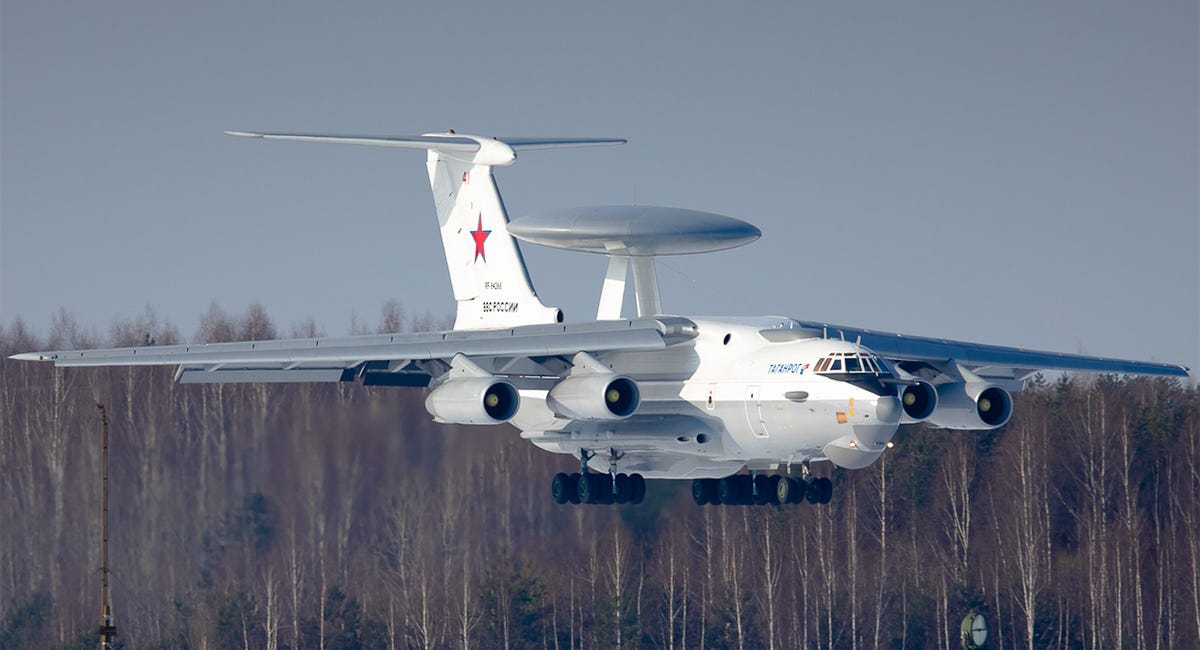A Ukrainian Surface-to-Air Missile Just Shot Down One of Russia's Best Su-35 Fighters
It was the eighth Su-35 loss of the wider war
A Ukrainian air force surface-to-air missile shot down a Russian air force Sukhoi Su-35 over Kursk Oblast in western Russia on Saturday. The twin-engine Su-35 is Russia’s best fighter that’s in widespread use.
Initial reports that a Ukrainian Lockheed Martin F-16 shot down the Su-35 were apparently false. “According to updated information, the Su-35 fighter jet that took off from the Borisoglebsk air base was shot down by a surface-to-air missile system,” analysis AviVector corrected.
It would’ve been the first confirmed kill by Ukraine’s slowly growing fleet of ex-European F-16s. And given the circumstances, an F-16 kill is increasingly likely.
Ukraine’s roughly two dozen single-seat, supersonic F-16AM/BMs—out of 85 that a Belgian-Danish-Dutch-Norwegian consortium pledged to the country—are busy over Kursk and Ukraine’s adjacent Sumy Oblast, their pilots trying to halt a Russian offensive that’s threatening Sumy city and its quarter-million residents.
Two months after an elite Russian drone group cut the supply lines feeding the Ukrainian force clinging to a 250-square-mile salient around the town of Sudzha in western Russia’s Kursk Oblast—ultimately driving the Ukrainians from Kursk after a bitter, six-month battle—the Russians are pressing their advantage on the northern front of their 39-month wider war on Ukraine.
In all, there are no fewer than 50,000 Russian troops in Kursk. The Ukrainian brigades holding the line in Sumy have many fewer troops—especially now that at least one elite formation, the 82nd Air Assault Brigade, has rushed south to Donetsk Oblast to block a Russian attack on the town of Kostiantynivka.
The F-16s are precious assets, but the dire situation in Sumy justifies risking them. The pro-Ukraine Conflict Intelligence Team noted F-16s lobbing U.S.-supplied Small Diameter Bombs—250-pound precision glide bombs—at Russian forces in and around Kursk.
“The application of F-16s in this role came as somewhat of a surprise,” CIT explained, “as they were initially utilized as ‘flying air defense’ deep within Ukrainian territory and only began appearing near the front line in the Sumy region in late winter 2025, accompanying Mikoyan MiG-29 fighter aircraft that launched guided aerial bombs.”
“It is possible that the [Ukrainian air force] has begun using their F-16s closer to the front line due to the recent arrival of new aircraft or due to an acute need to increase firepower,” CIT posited.
The F-16s are being upgraded for more dangerous missions. Kateryna Chernohorenko, the Deputy Minister of Defense of Ukraine for Digital Development, Digital Transformation and Digitalization, announced that the F-16s—as well as Ukraine’s French-supplied Mirage 2000 jets—will get software allowing them to plug into the Link-16 radio network.
Link-16, which helps pilots, battle-managers and air-defense crews silently share data over distances of hundreds of miles, should help the Ukrainian air force organize bigger and more complex strike packages.
Strike packages
The F-16s and Ukraine’s roughly dozen Mirage 2000s are the key to the strike packages. Unlike Ukraine’s pre-war Sukhois and MiGs, the F-16s and Mirage 2000s have internal radar-jammers—and can fly cover for the older Soviet-made jets.
“Sometimes when we arrive, there are already F-16s waiting there, or sometimes Mirages,” a Ukrainian fighter pilot said in an official video from March. The F-16s and Mirages “either cover the whole package that is sent there to [strike] our enemies, or also strike [themselves],” the pilot said.
The lead role the F-16s are taking in Ukraine’s air campaign means more risk for the jets and their crews. They’ve had a hard war—and it may get harder.
One F-16 crashed on May 16. It was the third of the type the Ukrainians have written off since the first examples arrived in Ukraine in August.
The air force promptly copped to the loss. “At about 03:30, contact was lost with the F-16 aircraft,” the service stated. “The Ukrainian fighter was performing a task to repel an enemy air attack. According to preliminary data, the pilot destroyed three air targets and worked on the fourth, using an aircraft cannon.”
“However, an emergency situation arose onboard,” the air force added. “The pilot took the aircraft away from the settlement and successfully ejected. Thanks to the operational work of the search-and-rescue team, the pilot was quickly found and evacuated.”
It had been just a month since the previous loss of an F-16 in Ukraine. Ukrainian president Volodymyr Zelensky announced that loss on April 12. “Capt. Pavlo Ivanov was tragically killed during an F-16 combat mission,” Zelensky wrote. “The guy was only 26. My condolences to his family and to all of Pavlo’s brothers-in-arms.”
It’s not clear what brought down that F-16. “We are establishing all the circumstances,” Zelensky explained.
The Ukrainian air force lost its first F-16 on the type’s first action over Ukraine on Aug. 26. Tragically, that pilot—Lt. Col. Oleksii Mes—also died.
Mes’s F-16 was not shot down, according to the Ukrainian general staff. Instead, it was destroyed in some unspecified accident.
The more the F-16s fly and fight and the closer they get to the front line, the greater the risk—but the closer they get to their first confirmed aerial victory. It may not have happened on Saturday. But it could happen soon.
Read more:
Ukraine's Smuggled Drone Raid May Have Blown Up One of Russia's Last Few A-50 Radar Planes
The Russian air force began Russia’s wider war on Ukraine in February 2022 with nine active Beriev A-50sM/Us—four-engine Ilyushin Il-76 airlifters with radar radomes on their fuselages and stations for up to 15 crew and battle-managers.





